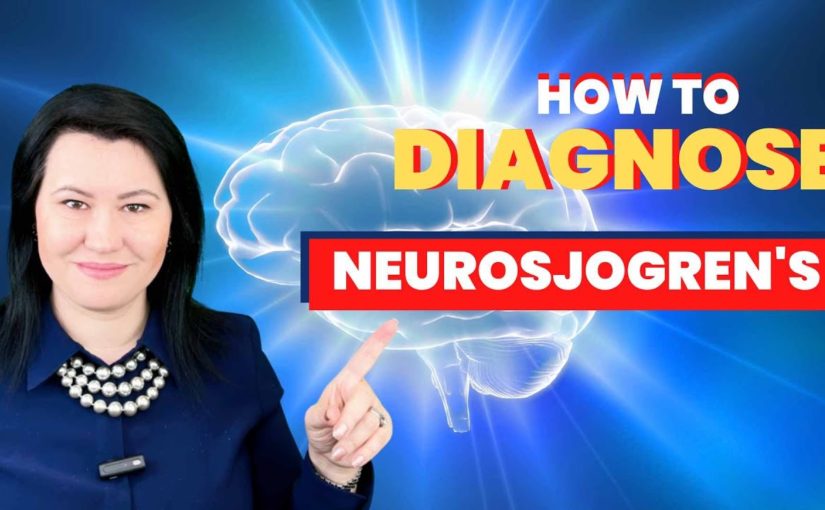00:00:18
lymphocytes being elevated there your IGG index being elevated but less oligoclonal bands and we’ll talk about that in a little bit. We also do blood work the blood work that I mentioned before we test for your Ana SSA and SSB antibody.
00:00:38
We look at your number of white blood cells we look to see if you have more gamma globulins. We look to see if you have chromative Factor complement levels all of these are important to be tested and what it was seen in patients that have CNS involvement or central nervous system
00:01:01
involvement is that not all of them they have a positive n a and only 38 will have a positive DNA about 48 percent have a positive SSA and only six percent will have a positive SSB antibody as I just mentioned in shogron that affects your brain and your spine only 40 to 50 percent of them
00:01:28
will have a positive SSA antibody and only six percent will have a positive SSB antibody and this is important because that makes the diagnosis very challenging this type of antibodies SSA antibodies they actually have been associated with a more aggressive disease of the brain what does it
00:01:52
mean it means that if you have SSA antibodies with neurological involvement that could mean that you have a more aggressive disease towards your brain or your spine we do use other tests like visual evoked potential which are abnormal in 61 percent of patients we use EEG or Electro
00:02:15
asphalogram which sometimes has a limited value but it can be useful to detect subclinical signs of neurological involvement we also use MRI and I’m going to take the time to explain to you the value of MRI in neurological involvement of shogran MRIs are more sensitive that CAT
00:02:37
scans to detect anatomical abnormalities in primary CNS or primary neurological chogran there are multiple areas of increased signal that will show inflammation specifically located in the subcortical and periventricular white matter and those lesions are found more
00:03:02
frequently in patients that have involvement of their brain let me talk to you more about brain MRI findings in sjogren I mentioned to you about white matter lesions and I made the comment that they have to be located in certain areas like periventricular areas and this makes the
00:03:23
diagnosis challenging because some patients with multiple sclerosis they can have the lesions in the same areas we’ll talk more about that in a little bit in some patients we do see signs of cerebral Venous Thrombosis and in other patients we do see two more like lesions that
00:03:42
are actually not tumor but there is a sign of program syndrome let’s talk about spinal MRIS spinal MRIs are ordered to evaluate the spinal cord involvement and they can show in patients with sjogren intensities or hyperintensities in the cervical area most of the time 82 percent
00:04:07
of patients will have that problem or they can have extended lesions in cases of acute myelopathy this is an MRI of a patient with Hyper signal in the cord that is suggestive of acute myelopathy this is also an MRI from a patient with extensive transverse myelitis this is
00:04:35
also another MRI of a patient with neuromyelitis Optica a patient that also has shogron this is another case of neuromyelitis optica where you can see involvement of the dorsal midbrain and and the point in lesion in a patient with sjogren that develop neuromyelitis Optica we also use
00:04:59
combinations of tests like MRI and a voxel-based morphometry and this is a method commonly used to quantitate and objectively evaluate the differences in Regional cerebral volumes this type of test was able to shown that patients with sjogren had certain areas of white matter hyper
00:05:22
intensities and those areas were also associated with more atrophy these studies show that Patients with Primary sjogren that have this white matter intensities and gray and white matter atrophy those are probably related to a sort of cerebral vasculitis or inflammation in the vessels of the
00:05:46
brain there are other tests like single Photon emission CT fees or pet scans that can evaluate the blood flow in the brain and it was shown that patients with children they have reduced cerebral blood flow they have brain atrophy and decreased glucose metabolism in the brain in
00:06:08
certain patients neuropsychological testing it’s also very important to evaluate symptoms that are very subtle in affecting the brain cerebral angiography is used more rarely in patients with primary sjogren but when it was used in 45 percent of Highly selected patients with children



